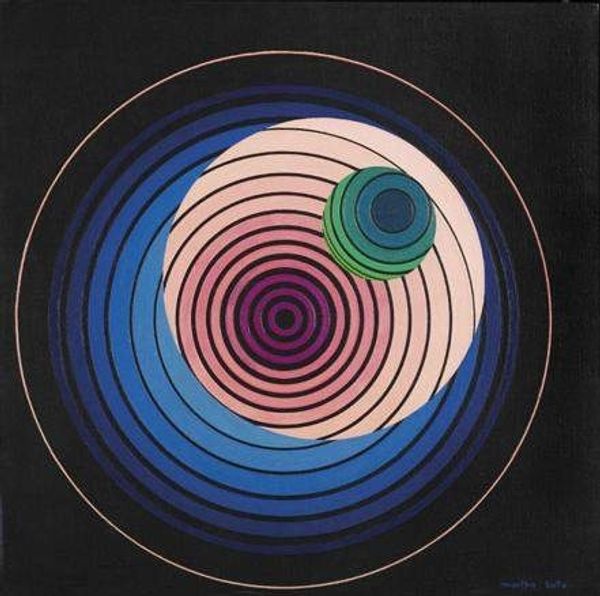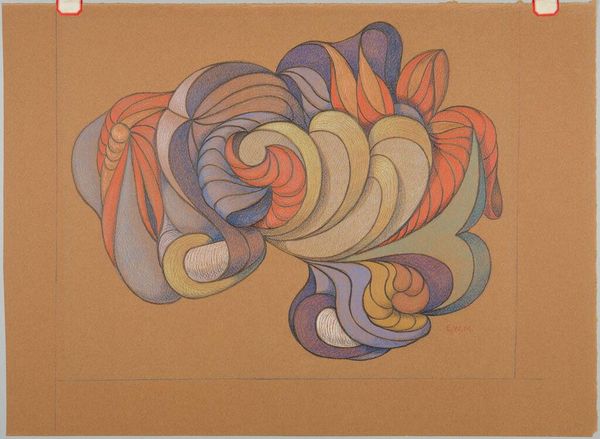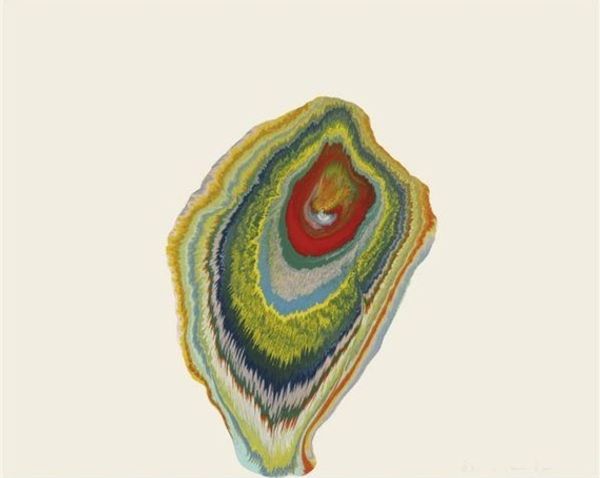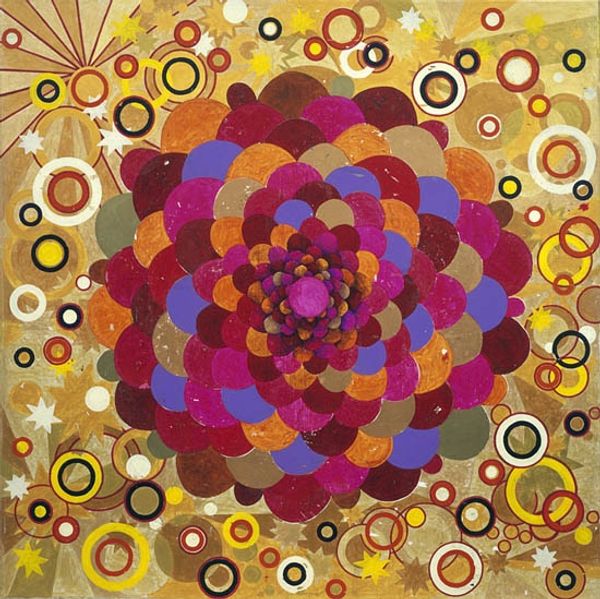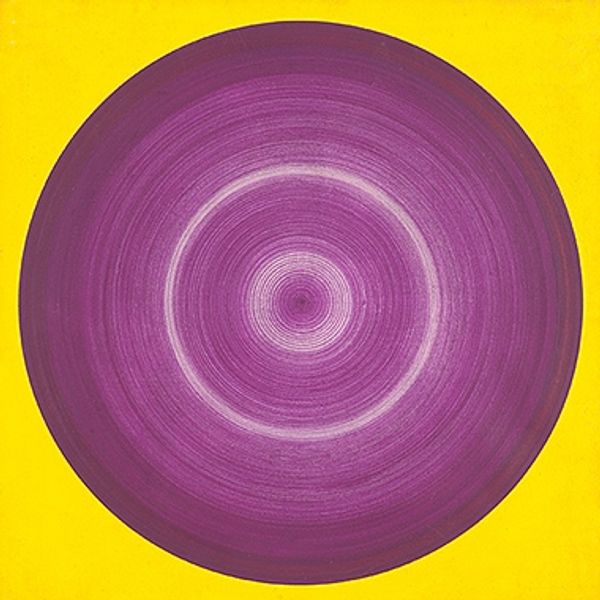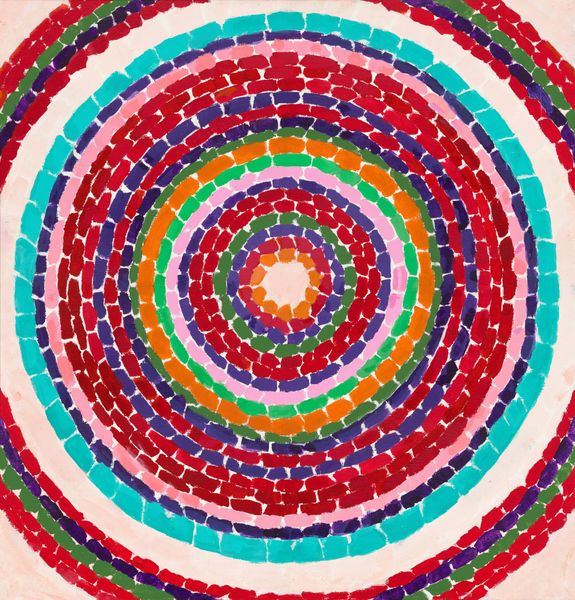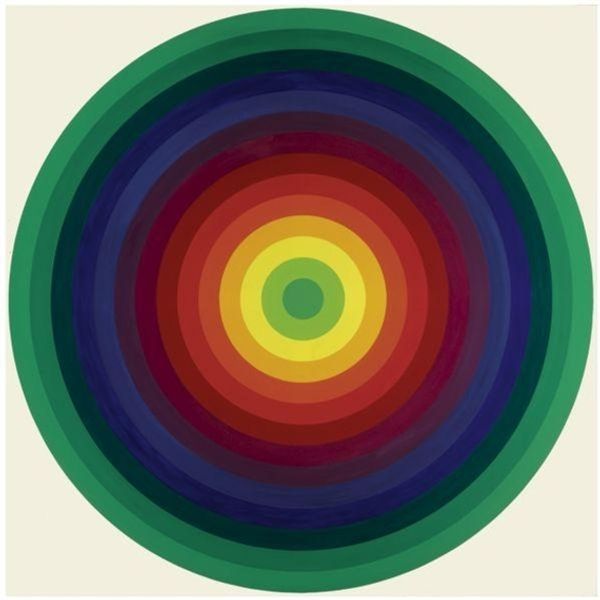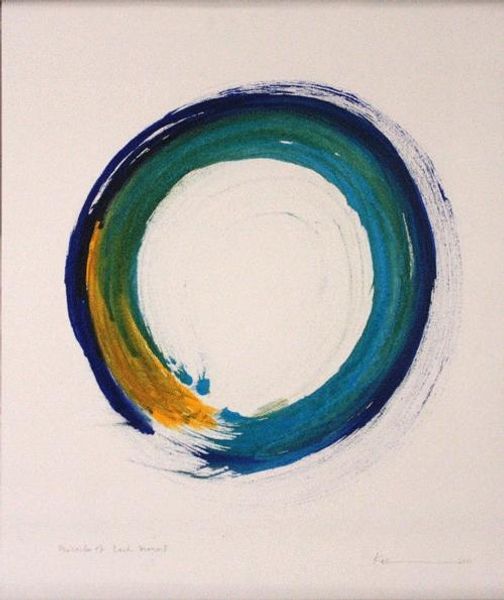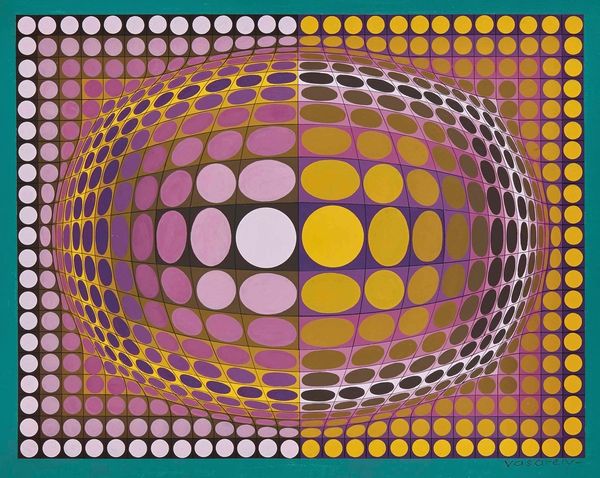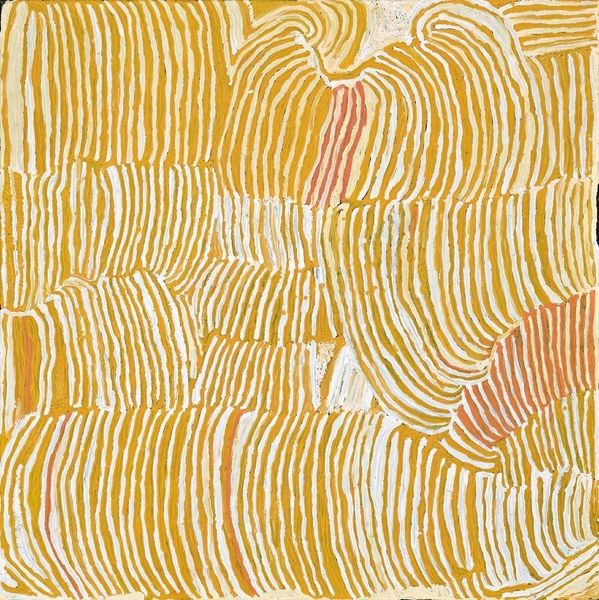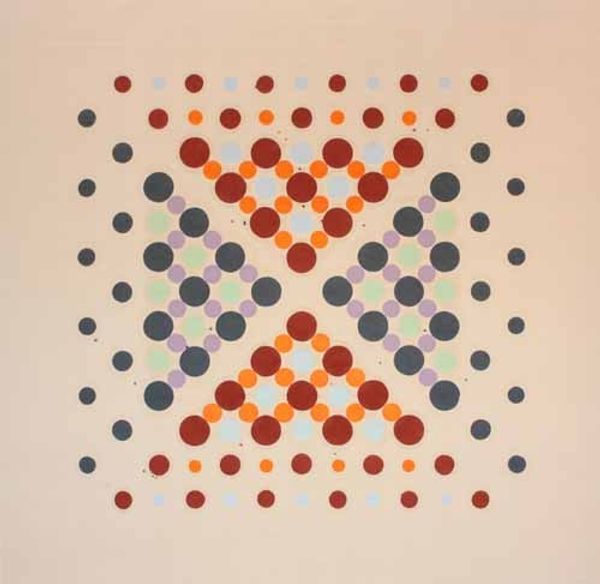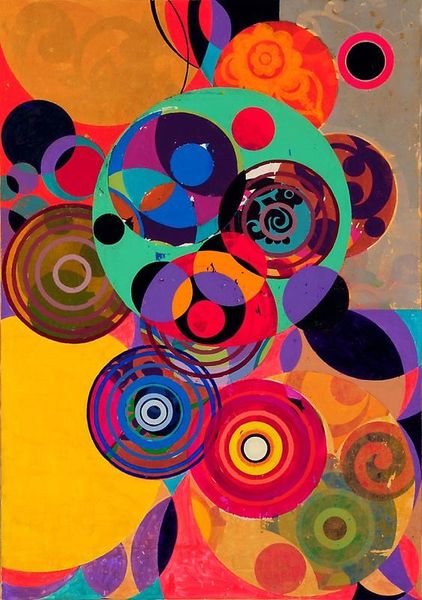
acrylic-paint
#
pop art-esque
#
circular oval feature
#
naturalistic pattern
#
pattern
#
round design
#
animal print
#
acrylic-paint
#
abstract pattern
#
repetitive shape and pattern
#
geometric
#
vertical pattern
#
abstraction
#
pop-art
#
pattern repetition
#
funky pattern
Copyright: Abdul Mati Klarwein,Fair Use
Curator: This is Abdul Mati Klarwein’s “Timeless,” painted in 1968. The artist worked primarily with acrylic paint. Editor: What strikes me immediately is how disorienting yet mesmerizing it is, with its spiraling form dominating the space. The color palette feels very grounded yet almost artificially rendered. It looks like an organic element being pulled into technological space. Curator: Yes, there's a very interesting interplay there. Klarwein himself pushed boundaries between high art and commercial work, even designing album covers. This work resonates deeply with psychedelic aesthetics popular at that time. We could contextualize this exploration within a period of shifting material culture. What do you see there? Editor: I find the repeating face along the edge deeply symbolic. It recalls, perhaps unintentionally, cyclical understandings of time within Indigenous epistemologies that have been historically othered. What are we to make of its re-emergence within the mainstream cultural conversation of the '60s? Who has access to concepts of ‘timelessness’? Curator: That tension between access and abstraction is definitely present in Klarwein’s work. He pulled imagery from diverse cultural sources, blending them in ways that reflect a contemporary mode of production and circulation. In my opinion, it suggests a sort of democratization of visual motifs through art making. Editor: Interesting—yet considering it was painted in 1968, the year Martin Luther King Jr. was assassinated, alongside a proliferation of resistance movements in response to capitalist exploitation across the globe, how do we situate these forms and figures as more than mere stylistic appropriation in response to ongoing oppressions? Curator: Those are difficult and necessary questions. What I find especially compelling is that this tension is exactly what the painting leaves the viewer with; what possibilities can you make with it? Editor: Precisely. We're left to grapple with how we navigate these complex intersections, both within the painting and in the world it reflects and responds to.
Comments
No comments
Be the first to comment and join the conversation on the ultimate creative platform.
